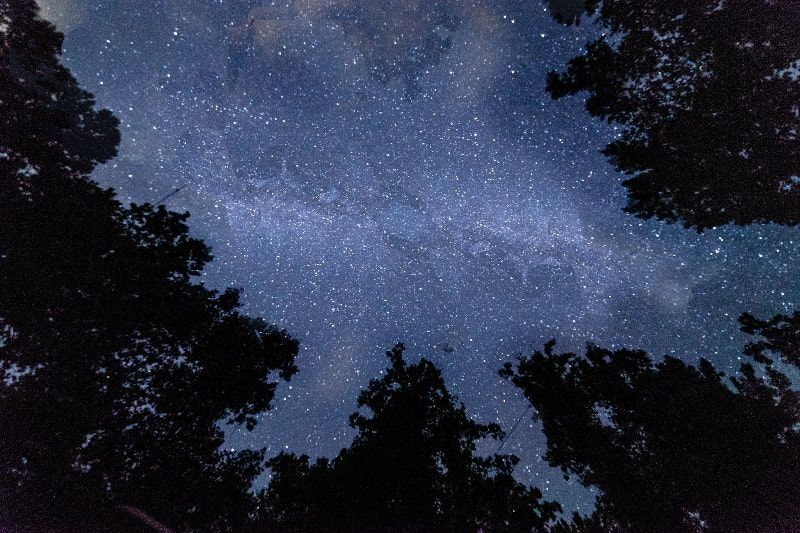Sky pollution in cities
The dark sky is a unique natural resource. To stop seeing the sky is not only a cultural loss, but the production of electricity from the use of fossil fuels continually pollutes the atmosphere.

The main purpose of street lighting is to illuminate the streets for the inhabitants, both those who walk and those who travel by car. However, millions of people living in cities cannot see the night sky because of the light that illuminates it unnecessarily. With the naked eye, the human eye can see 6,000 stars, but in cities, it is difficult to see more than a few dozen.
According to NASA, two-thirds of the world's population can no longer look up and observe our galaxy, the Milky Way, made up of about 100 billion stars, which, during the summer, in the northern hemisphere appears as a strip that goes from one end of the horizon to the other.
The greatest contribution to light pollution comes precisely from the public lighting network, whose luminaires are not properly designed to send light only where it is needed and prevent upward propagation. Aerosols in the atmosphere scatter light, i.e. they change the direction of the light they receive, and this process is repeated depending on the number of suspended particles. This scattered light creates a glow that prevents the dark sky from being seen and as a result, most people living in cities have never seen the night sky.
This type of glow is the same as that seen from miles away when approaching a city, for example coming into Puebla from Atlixco. The effect is the same as perhaps we have all experienced when driving in a car with a dusty windshield. If a car traveling in the opposite direction illuminates our windshield, it dazzles us because the dust particles on the windshield scatter or disperse the light.
Lighting in itself is not a problem, it becomes a problem when it is excessive, poorly designed, poorly installed, or without proper maintenance. One of the most illustrative examples of poor lighting is that of spherical luminaires, very common in some of the historic centers of our cities since all the light from the upper hemisphere goes directly upwards. Some buildings are illuminated from the bottom upwards to highlight them, and what can we say about spectacular advertisements or sports facilities such as soccer stadiums?
Light pollution not only affects the night sky but is an environmental problem that disrupts the daily lives of millions of people and many species. In addition to the increase in sky brightness, other types of light pollution are identified: glare is produced by intense brightness, uncomfortable to the eyes, which appears when the light source is brighter than the surroundings, reducing visibility, as our eyes adapt to brighter light making the surroundings appear darker.
Stray light illuminates where it is not needed or required and occurs when it goes beyond where the target is, illuminating adjacent property. Overlighting occurs when light levels exceed those needed for the task, on the principle that more light is better.
For example, there is an idea that more light means more safety; however, this is not always the case. Light is indeed required to see and to be safe at night, but poorly designed, unprotected downward facing or poorly placed luminaires can be even less safe: dazzling lights cause dark areas where the thief can hide. Criminals can then take advantage of this false sense of security in over-lit places.
In addition to humans, one of the species most affected by light pollution is birds. Among them are the Kirland's warblers that migrate from the Bahamas to the Great Lakes in the northern United States and back. Along the way, they have to pass through different cities.
Every year about one billion warblers are killed by collisions with buildings, considering only the United States of America. The light from buildings is responsible for many of these deaths because the birds orient themselves with the light from the sun or stars but the illuminated buildings confuse them so much that they start circling them and eventually collapse from exhaustion1.
There are maps of the world created with satellite images in which the continents are perfectly delineated precisely by the light they emit into the sky. The most developed countries produce the most light pollution, so the darkest parts are in Africa or uninhabited regions such as the Amazon, deserts, northern Russia, or northern Canada. The U.S. Department of Defense, through a meteorological satellite program (DMSP), makes it possible to obtain the level of energy lost to the sky in kilo Watt hours per square kilometer2.
The dark sky is a unique natural resource. It has the intangible value of the experience and enjoyment of nature. It is said that the sky belongs to everyone and for good reason: when we look up at the star-filled night sky, we contemplate and perhaps appreciate humanity's place in the vast cosmos.
To stop seeing the sky is not only a cultural loss, but the production of electricity from the use of fossil fuels continually pollutes the atmosphere, producing gases that contribute to the greenhouse effect. Hence, reducing electricity consumption by avoiding waste while ensuring an effective and safe level of lighting for homes, streets and public buildings should be a priority for all governments.
By Esperanza Carrasco Licea, Source: Saberes y Ciencias




